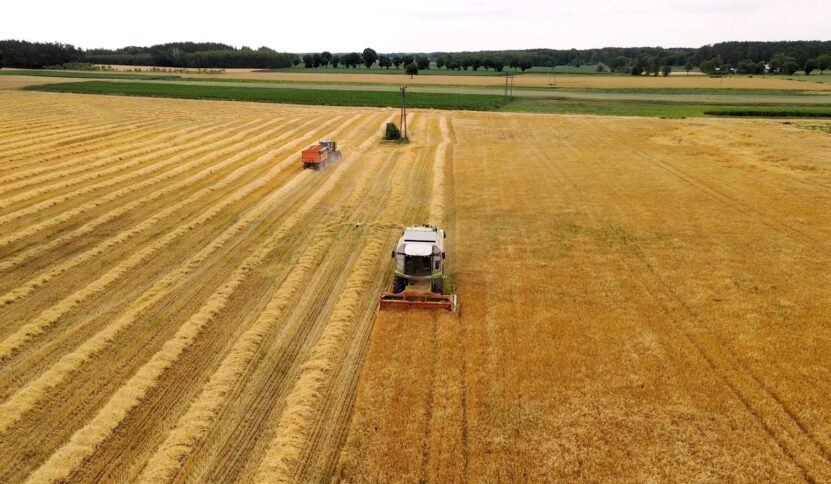Starting a cooperative farm is a fulfilling project that combines resources, knowledge, and community effort to create a successful and sustainable farm. After many years of experience, I’ve seen the many benefits of cooperative farming firsthand.
This guide will walk you through the process of starting your own farm co-op. There are some important things to consider, but don’t let that scare you off. With a little planning and getting the right people involved, your co-op dreams can definitely become a reality.
Plan your cooperative farm
The first step in starting a cooperative farm is thorough planning. This involves defining your goals, identifying potential members, and laying out a clear vision for your cooperative.
Define your goals
Ask yourself and potential members what you hope to achieve with your cooperative farming. Are you looking to improve sustainability, increase production, or share the joy of farming with others? Having clear goals will help guide your efforts and keep everyone on the same page.
Identify Potential Members
A cooperative farm thrives on collaboration. Look for individuals who share your vision and are willing to contribute their time, skills, and resources. Hold meetings to discuss ideas, expectations, and commitment levels. It’s crucial to find dedicated members who will actively participate in the cooperative.
Develop a vision and mission statement
Your vision and mission statement will serve as the foundation of your cooperative. It should reflect your goals, values, and the principles that will guide your farm. A clear and inspiring mission statement can motivate members and attract new ones.
Establish a legal structure and governance

This includes choosing a legal entity, creating bylaws, and setting up a governance framework.
Choose a legal structure
Depending on your location, there are different legal structures for cooperative farms. Common options include:
- Cooperative corporation: A legal entity owned and democratically controlled by its members.
- Limited liability company (LLC): Offers flexibility and limited liability protection.
- Nonprofit organization: Suitable if your cooperative has a social or educational mission.
Consult with a legal expert to determine the best structure for your cooperative.
Create bylaws
Bylaws are the rules that govern your cooperative. They should outline the roles and responsibilities of members, decision-making processes, and how profits and losses will be shared. Bylaws help prevent conflicts and ensure everyone knows what to expect.
Set up a governance framework
Establish a governance framework that includes a board of directors, committees, and regular meetings. This structure will help manage the cooperative’s operations and ensure all members have a voice in decision-making.
Secure land and resources

Once you have a solid plan and legal structure, it’s time to secure land and resources for your cooperative farm. This step involves finding suitable land, acquiring necessary equipment, and securing funding.
Find suitable land
Finding the right land for your cooperative farm is crucial. Consider factors such as soil quality, water availability, and proximity to markets. You may need to lease or purchase land, depending on your budget and long-term plans. Reach out to local land trusts, government programs, and community organizations for assistance.
Acquire equipment and supplies
Cooperative farming allows you to share equipment and supplies, reducing individual costs. Create a list of essential tools and machinery, and develop a plan for acquiring them. Consider leasing equipment or purchasing used items to save money.
Secure funding
Funding is often a significant challenge for new cooperative farms. Explore various funding options, including:
- Grants and loans: Look for government grants, low-interest loans, and agricultural programs.
- Member contributions: Members can contribute financially or through labor and resources.
- Crowdfunding: Launch a crowdfunding campaign to raise money from supporters.
Build your cooperative farm

With land and resources secured, it’s time to build your cooperative farm. This involves setting up infrastructure, developing farming practices, and fostering a strong community.
Set up infrastructure
Start by establishing basic infrastructure, such as irrigation systems, fencing, and storage facilities. Proper infrastructure is essential for efficient farming operations and protecting your crops and livestock.
Develop sustainable farming practices
Sustainability is a core principle of cooperative farming. Implement sustainable farming practices that promote soil health, conserve water, and reduce environmental impact. Practices such as crop rotation, composting, and integrated pest management can enhance the long-term viability of your farm.
Foster a Strong Community
A successful cooperative farm relies on a strong sense of community. Encourage regular communication and collaboration among members. Organize events, workshops, and social activities to build relationships and share knowledge. A supportive community will help your cooperative thrive.
Market and sell your products effectively

Marketing and selling your products effectively is key to the success of your cooperative farm. Develop a marketing strategy, establish distribution channels, and build relationships with customers.
Develop a marketing strategy
Create a marketing strategy that highlights the unique qualities of your cooperative farm. Emphasize your commitment to sustainability, community, and high-quality products. Utilize various marketing channels, including social media, local markets, and online platforms, to reach potential customers.
Establish distribution channels
Identify and establish distribution channels for your products. This may include farmers’ markets, local grocery stores, restaurants, and direct-to-consumer sales. Partner with other local businesses to expand your reach and increase sales.
Build customer relationships
Building strong relationships with customers is crucial for long-term success. Offer excellent customer service, engage with your community, and seek feedback to improve your products and services. Loyal customers can become advocates for your cooperative farm, helping you attract new buyers.
Maintain and grow your cooperative

Once your cooperative farm is up and running, focus on maintaining and growing it. This involves continuous improvement, expanding your membership, and adapting to changing circumstances.
Continuous improvement
Regularly evaluate your farming practices, operations, and governance to identify areas for improvement. Encourage members to share feedback and participate in decision-making. Continuous improvement will help your cooperative adapt and thrive in the long run.
Expand your membership
As your cooperative farm grows, consider expanding your membership to include more farmers and community members. New members can bring fresh ideas, skills, and resources, contributing to the cooperative’s success. Develop a clear membership process and welcome new members with orientation and training programs.
Adapt to changing circumstances
Agriculture is inherently unpredictable, and your cooperative must be adaptable to changing circumstances. Develop contingency plans for weather events, market fluctuations, and other challenges. Stay informed about industry trends and innovations, and be open to adopting new practices and technologies.
In summary
Starting a cooperative farming initiative is a rewarding journey that requires careful planning, collaboration, and dedication. My experience has taught me the value of working together towards a common goal. The sense of community, shared knowledge, and sustainable practices have made our farm successful and fulfilling.
I encourage you to embrace the cooperative model and create a farming initiative that reflects your vision and values.








